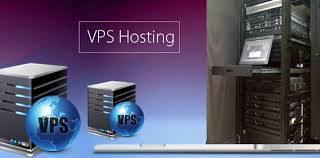Technology
A Deep Dive into Unlabeled Data in Machine Learning

Machine learning is changing the world, from how we shop to the way we communicate. At its heart lies data, the key to teaching computers to make decisions. There are two types of data: labeled and unlabeled. Labeled data, often scarce and expensive to produce, has been the focus until now. However, the new player here is unlabeled data. It’s everywhere, yet largely unused.
This article dives into the world of unlabeled data in machine learning, exploring its potential to revolutionize the field. Find out how businesses and technologists are tapping into this vast resource to create smarter, more adaptive machine learning models. Join us as we explore how it turns smarter, more adaptable AI from a possibility into reality.
Data as the Foundation of Machine Learning
Nearly 40% of companies worldwide now integrate AI into their workflows. This widespread adoption underscores machine learning’s explosive growth and its power to reshape industries. At the core of machine learning lies data, the indispensable teacher for algorithms.
Data falls into two main categories: labeled and unlabeled. Traditionally, labeled data, with its clear tags and structure, has fueled supervised machine learning projects. This data tells models exactly what to learn, guiding them like a map.
However, unlabeled data — vast and mostly untapped — holds a promise of its own. Each day, the digital universe expands, generating zettabytes of data. Yet, a tiny fraction receives labels. This abundance of unlabeled data in machine learning presents both a challenge and an opportunity:
- Without labels, data lacks explicit instructions for models. This means algorithms must navigate without a map, discovering patterns and making sense of the information on their own.
- The sheer volume of unlabeled data offers a rich, untapped resource. By learning to leverage this data, machine learning can evolve. It can grow more adaptable, more efficient, and ultimately more powerful.
The journey from reliance on labeled data to the innovative use of unlabeled data is crucial. It marks a shift towards models that can learn from the vast majority of data available — data that is raw, unstructured, and more reflective of the real world. This evolution promises to unlock new capabilities and insights, propelling machine learning into its next phase of growth and application.
Leveraging Unlabeled Data in Machine Learning
Using unlabeled data in machine learning opens a realm of possibilities. It pushes the boundaries of what machines can learn and achieve. Let’s delve into the techniques that make this possible and highlight their impact across various fields:
- Semi-supervised learning. This method mixes a bit of labeled data with a lot of unlabeled data to boost model performance. It’s cost-effective and improves accuracy when labeled data is limited.
- Unsupervised learning. Models use this technique to find patterns and structures in the data. It’s great for discovering hidden insights, useful in anomaly detection and data exploration.
- Transfer learning. This approach takes what models have learned from one task and applies it to another, related one. It’s efficient, cutting down on the need for new labeled data and speeding up development.
- Adaptive model training. Models that adapt by learning from new, unlabeled data stay up-to-date. This approach keeps models relevant over time.
These methods are making a big impact in areas like:
- Natural language processing (NLP). Unsupervised learning helps understand language subtleties without requiring lots of labeled data.
- Image recognition. Semi-supervised learning aids in interpreting numerous images using few labeled examples.
- Predictive analytics. Models can forecast outcomes in new areas based on previous data insights.
Harnessing unlabeled data, we’re making advanced models more accessible and budget-friendly. This strategy is revolutionizing industries by enabling more precise predictions and personalized services. In healthcare, it’s being used to forecast patient outcomes with remarkable accuracy. Retailers are using it to tailor shopping experiences, and to make recommendations that hit the mark every time.
This shift towards utilizing previously overlooked data is not just innovative. It’s opening up new pathways for growth and competition.
What to Do with Unlabeled Data?
While supervised learning stands out for its precision and effectiveness, it also faces challenges. Primarily due to the cost and effort required to obtain labeled data. However, the abundance of unlabeled data presents an opportunity, not a roadblock.
Here’s how to navigate this landscape:
- Exploring with unsupervised learning. Start by applying unsupervised learning techniques to your unlabeled data. This can simplify the data or categorize it, aligning with your objectives. Even labeled datasets benefit from this step, preparing them for more complex learning stages.
- Embracing semi-supervised learning. This method bridges the gap between supervised and unsupervised learning. By training your AI on a combination of a small set of labeled data and a large volume of unlabeled data, you enhance the learning process. This fosters the development of more sophisticated and reliable AI systems.
The critical role of annotated data in machine learning cannot be overstated. Annotating your data, whether in bulk or selectively, lays the foundation for advanced machine learning applications. It’s here that our expertise comes into play, ready to support your data labeling needs. Combining semi-supervised learning with high-quality annotated data can set the stage for success. At the same time, it will optimize both efficiency and accuracy.
Wrapping Up
This journey into the realm of unlabeled data shows us the endless possibilities when we think outside the box. Overall, it’s clear that the power of unlabeled data in machine learning is not just a theory but a reality shaping our world. From the way AI suggests your next favorite song to how the prediction of traffic jams, unlabeled data is the unsung hero behind the scenes.
Unlabeled data, although lacking explicit annotations, can still be used effectively in unsupervised learning tasks through clustering and dimensionality reduction techniques. Alternatively, you can go for a semi-supervised learning, a hybrid approach combining labeled and unlabeled data, which proves to be efficient in training AI models while saving resources.












